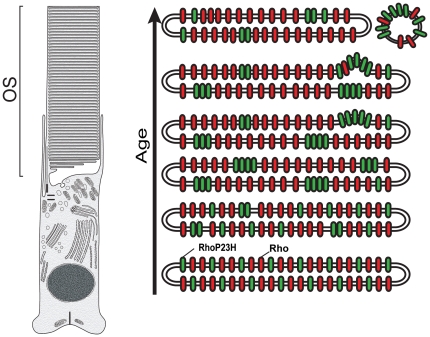XB-IMG-126818
Xenbase Image ID: 126818

|
Figure 6. Schematic model to explain OS defect formation in disks that express mutant opsin.Wild type rhodopsin (red) distributes randomly throughout the disk membrane (except incisures which are not shown). In rods expressing RhoP23H (green), there is an initial random distribution of mutant with wild type protein in the disk, although the concentration of mutant protein is much lower than wild type protein. According to this model, over time, the RhoP23H mutant begins to self-associate and form aggregates in the membrane, excluding wild type protein. The resulting mutant protein concentrates in a localized area that causes deformation or defects in the membrane structure, leading to vesiculation and disk breakdown. This could lead to structural instability in the OS, initiating a breakdown and potentially rod death. Image published in: Haeri M and Knox BE (2012) Haeri, Knox. Creative Commons Attribution license Larger Image Printer Friendly View |
